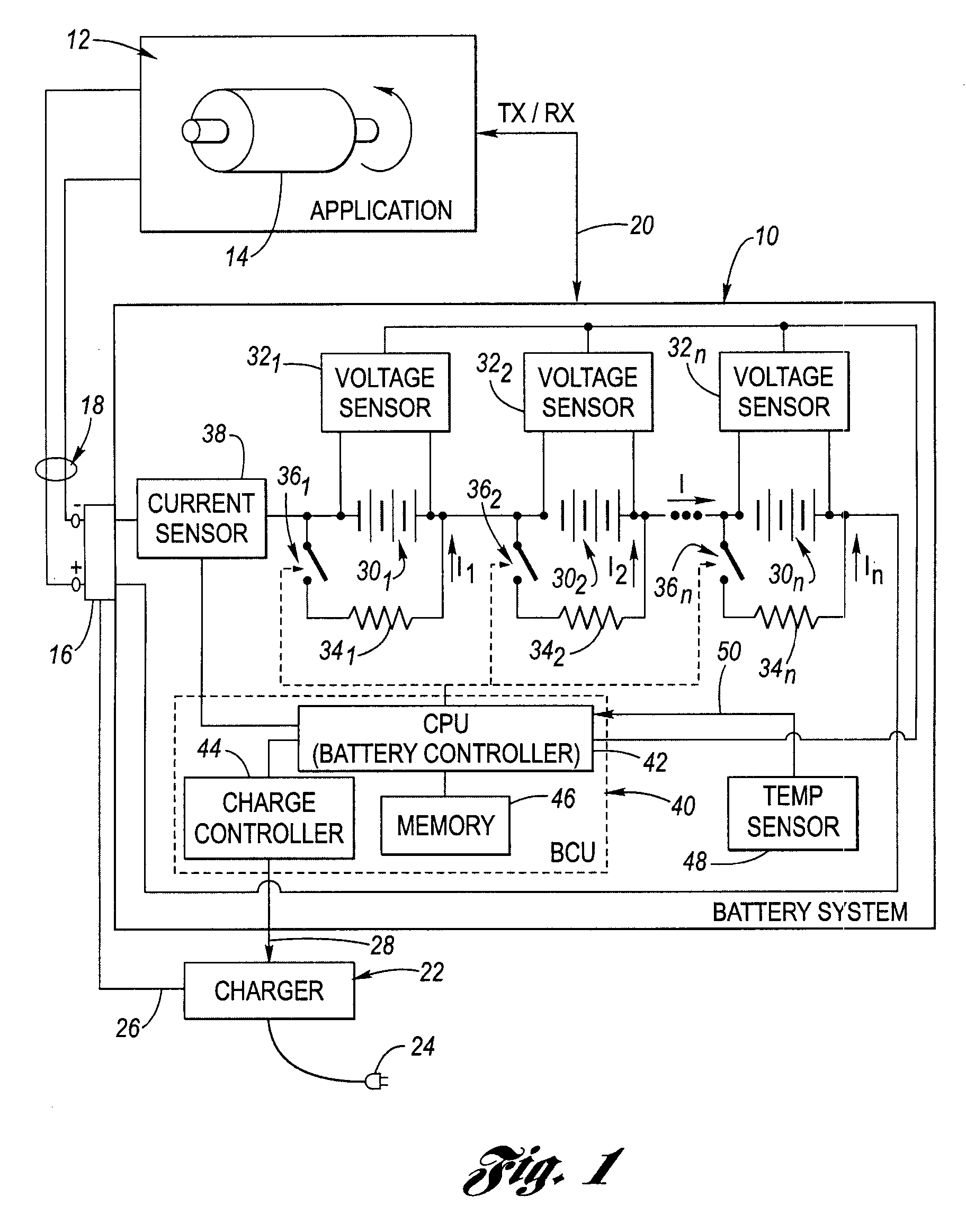Method for battery cold-temperature warm-up mechanism using cell equilization hardware
a technology of cell equilization and warm-up mechanism, which is applied in the directions of battery arrangements, safety/protection circuits, transportation and packaging, etc., can solve the problems of lithium ion and lithium polymer battery chemistries, unable to achieve natural cell equalization mechanism, and inability to overcharge without damaging active materials, etc., to achieve low temperature charging and dissipate charge the effect o
- Summary
- Abstract
- Description
- Claims
- Application Information
AI Technical Summary
Benefits of technology
Problems solved by technology
Method used
Image
Examples
Embodiment Construction
[0021] Multi-cell lithium battery systems do not have a natural cell-balancing or equilization technique, as described in the Background. Therefore, such cell-balancing circuitry is often employed to provide active cell balancing. Such circuitry often includes dissipative devices (e.g., in the form of an electrical resistor) to dissipate charge from selected battery cells, therefore causing the selected cells to match the capacity of the other cells in the system.
[0022] The present invention configures a lithium battery controller to use the dissipative balancing circuit(s) to produce heat to warm the cells of the system when cold temperature conditions prevail.
[0023] Referring now to the drawings wherein like reference numerals are used to identify identical components in the various views, FIG. 1 is a simplified, schematic and block diagram view of an inventive battery system 10 according to the invention suitable for use in connection with any one or more of a plurality of exem...
PUM
 Login to View More
Login to View More Abstract
Description
Claims
Application Information
 Login to View More
Login to View More - R&D
- Intellectual Property
- Life Sciences
- Materials
- Tech Scout
- Unparalleled Data Quality
- Higher Quality Content
- 60% Fewer Hallucinations
Browse by: Latest US Patents, China's latest patents, Technical Efficacy Thesaurus, Application Domain, Technology Topic, Popular Technical Reports.
© 2025 PatSnap. All rights reserved.Legal|Privacy policy|Modern Slavery Act Transparency Statement|Sitemap|About US| Contact US: help@patsnap.com


